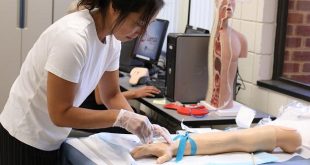USE OF DRUGS
People consult a doctor to find out what (if anything) is wrong (the diagnosis), and what should be done about it (the treatment). If they are well, they may nevertheless want to know how future problems can be prevented. Depending on the diagnosis, treatment may consist of reassurance, surgery or other interventions. Drugs are very often either the primary therapy or an adjunct to another modality (e.g. the use of anaesthetics in patients undergoing surgery).
Sometimes contact with the doctor is initiated because of a public health measure (e.g. through a screening programme). Again, drug treatment is sometimes needed. Consequently, doctors of nearly all specialties use drugs extensively, and need to understand the scientific basis on which therapeutic use is founded.
ADVERSE EFFECTS AND RISK/BENEFIT
Medicinal chemistry has contributed immeasurably to human health, but this has been achieved at a price, necessitating a new philosophy. A physician in Sir William Osler’s day in the nineteenth century could safely adhere to the Hippocratic principle ‘first do no harm’, because the opportunities for doing good were so limited. The discovery of effective drugs has transformed this situation, at the expense of very real risks of doing harm.
For example, cures of leukaemias, Hodgkin’s disease and testicular carcinomas have been achieved through a preparedness to accept a degree of containable harm. Similar considerations apply in other disease areas. All effective drugs have adverse effects, and therapeutic judgements based on risk/benefit ratio permeate all fields of medicine.
Drugs are the physician’s prime therapeutic tools, and just as a misplaced scalpel can spell disaster, so can a thoughtless prescription. Some of the more dramatic instances make for gruesome reading in the annual reports of the medical defence societies, but perhaps as important is the morbidity and expense caused by less dramatic but more common errors
DRUG HISTORY AND THERAPEUTIC PLAN
In the twenty-first century, a reliable drug history involves questioning the patient (and sometimes family, neighbours, other physicians, etc.). What prescription tablets, medicines, drops, contraceptives, creams, suppositories or pessaries are being taken? What over-the-counter remedies are being used including herbal or ‘alternative’ therapies? Does the patient use drugs socially or for ‘life-style’ purposes?
Have they suffered from drug-induced allergies or other serious reactions? Have they been treated for anything similar in the past, and if so with what, and did it do the job or were there any problems? Has the patient experienced any problems with anaesthesia? Have there been any serious drug reactions among family members?
FORMULARIES AND RESTRICTED LISTS
Historically, formularies listed the components of mixtures prescribed until around 1950. The perceived need for hospital formularies disappeared transiently when such mixtures were replaced by proprietary products prepared by the pharmaceutical industry. The BNF summarizes products licensed in the UK.
Read More: themakernewsz.com
Because of the bewildering array, including many alternatives, many hospital and primary care trusts have reintroduced formularies that are essentially restricted lists of the drugs stocked by the institution’s pharmacy, from which local doctors are encouraged to prescribe.
The objectives are to encourage rational prescribing, to simplify purchasing and storage of drugs, and to obtain the ‘best buy’ among alternative preparations. Such formularies have the advantage of encouraging consistency, and once a decision has been made with input from local consultant prescribers they are usually well accepted.
SCIENTIFIC BASIS OF USE OF DRUGS IN HUMANS
The scientific basis of drug action is provided by the discipline of pharmacology. Clinical pharmacology deals with the effects of drugs in humans. It entails the study of the interaction of drugs with their receptors, the transduction (second messenger) systems to which these are linked and the changes that they bring about in cells, organs and the whole organism.
These processes (what the drug does to the body) are called ‘pharmacodynamics’. The use of drugs in society is encompassed by pharmacoepidemiology and pharmacoeconomics – both highly politicized disciplines!
 Jobsearchdone.com Top News Share Website
Jobsearchdone.com Top News Share Website




